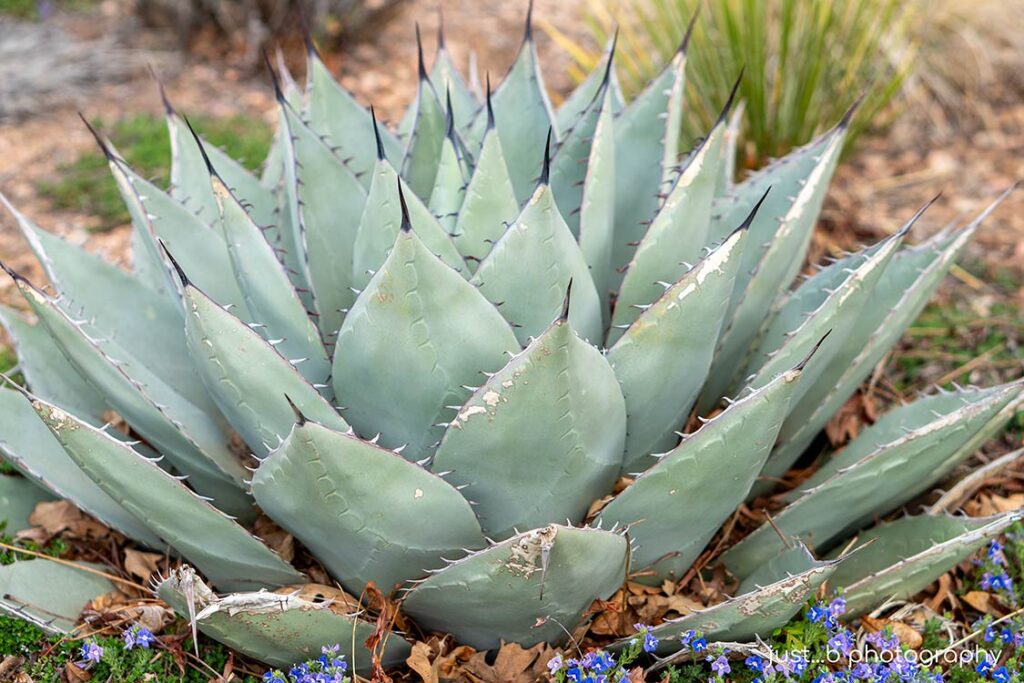Continuing on with giving other succulents some love, this post is dedicated to Agave plants. They are quite interesting in their own right. They have thick leaves – often tipped with black which remind me of a black tipped shark. Considering their ability to impale if one is not paying attention, they can leave a mark. That’s on me as I have accidentally backed into one of these plants more than once in my cactus photography adventures!
These succulents are tough, drought-tolerant plants which do very well in the xeric gardens. Their swollen looking leaves store water, enabling them to survive in low moisture and poor soil conditions.
Just to be clear, these Agave plants are not to be mistaken with the Mexican variety who’s juices are used today to make the liquors mescal, pulque, and tequila.
A Little Basic Background Info:
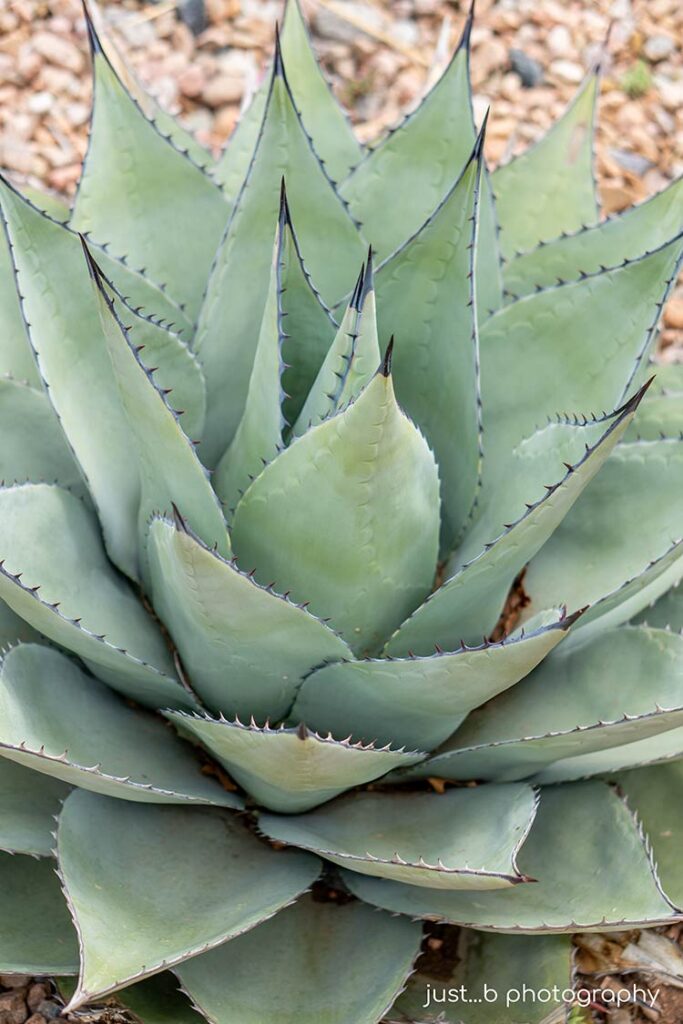
“Parry’s Agave is a rosette-forming perennial native to the deserts of North and Central America. The plant generally likes drier soils and full sun and provides unique geometry and a slate gray/blue foliage. It is exceptionally cold hardy with thick silver-gray leaves that grow to form a large sized rosette when mature. As an evergreen it will retain its rosette of foliage into the winter.
The leaves of Parry’s Agave are spade-shaped with a tipped end, designed to capture and funnel as much water from rainfall as possible to its base.
They provided Indigenous peoples in the southwestern Americas with food, beverages, fiber, soap, medicine, and lances.”
Note: Agave plants are often called Century plants as they may require many years to flower, but not a century. After flowering, the original rosette will die off and more rosettes will form off of suckers from the original plant.
Capturing Different Views of Agave Plants
While a straight on view gives you an idea of a Parry’s agave basic succulent structure. It’s more of a classic shot. But it’s the overhead view that reflects the details of this plant’s true nature. Or the view I prefer to capture as I love seeing the rosette form. They display “a pattern of leaves structured as layers of concentric circles” which resemble a rosette.
The photo below taken during my visit to the Santa Fe Botanical Garden at Museum Hill is a great example of the rosette appearance.

Parry’s Agave and Their Towering Flower Stalks
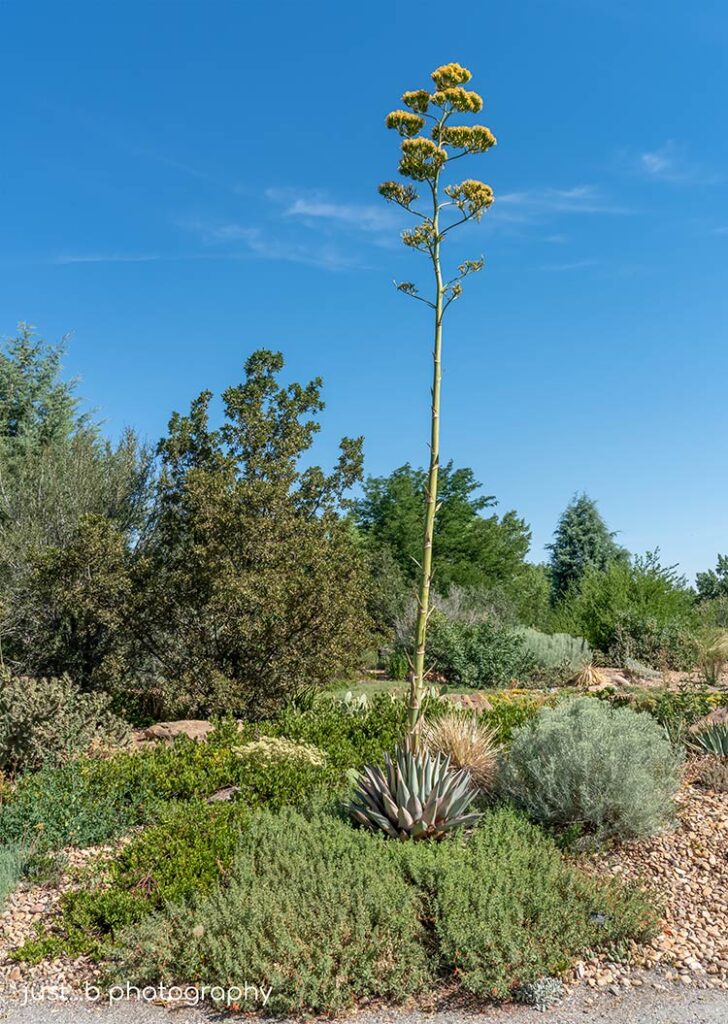
When an Agave plant flowers, it can have a giant stalk up to 20 feet tall with 20 to 30 side branches and each side branch with hundreds of small yellow flowers.
I’ve since learned these tall stalks are known as “Agave Death Blooms” as shortly thereafter the plant dies.
During my time in Colorado, one of the Parry’s Agave plants in the local xeric gardens shot up one of these tall stalks and bloomed. It was a big deal and I recall it even being mentioned on the local news!
The photo gives you the scale of just how tall these flowering stalks get. Hard to believe that comes from the smallish plant!

Truth be told, I had never seen an agave plant flower until I was living in Santa Fe, NM.
Walking along one of the dirt roads where I knew there were countless Chamisa plants, I came across my first flowering Agave plant. The stalk was crazy tall with these clusters of yellow flowers branching out.
Bees were of course going crazy on these flowers. I suspect given Agaves do not flower every year and or when they do flower they die shortly thereafter, these bees were on a mission!
This zoomed in photo shows you what the flower clusters actually look like. Taken against a lovely NM sky never hurts.
Capturing the “Death Bloom” Sequence
Being back in Santa Fe, Agave/Century cactus plants are frequent tenants around the neighborhood. As it turns out, just up the street three plants began their “Death Bloom” at the same time. It’s a first for me being able to capture the entire sequence as it was unfolding. So here is a photo documentation of this unique event.
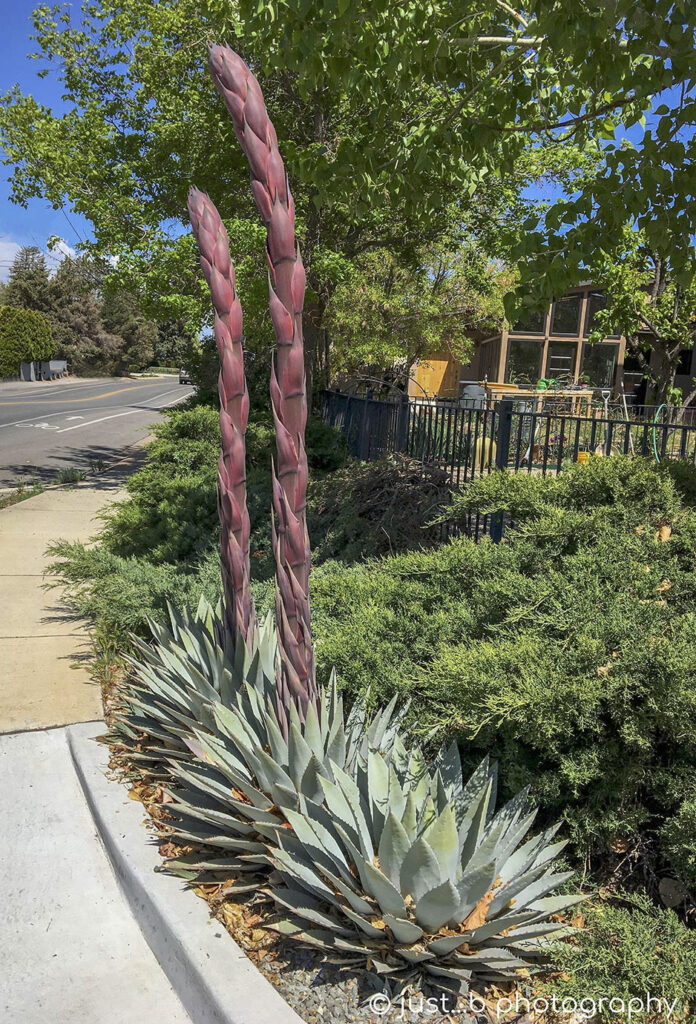
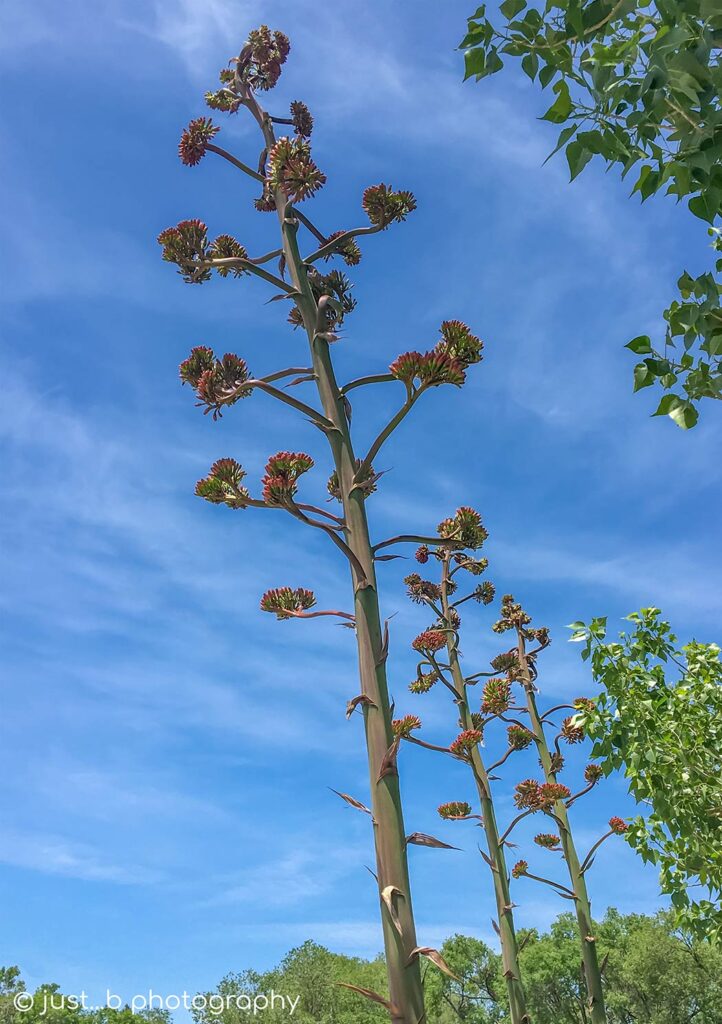
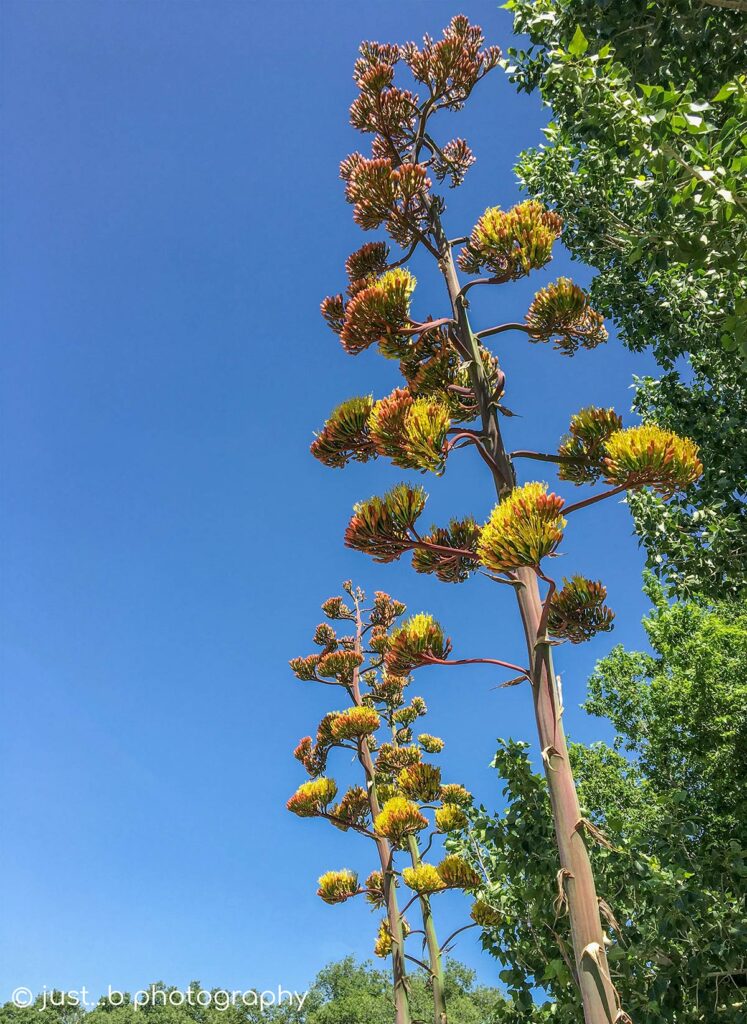
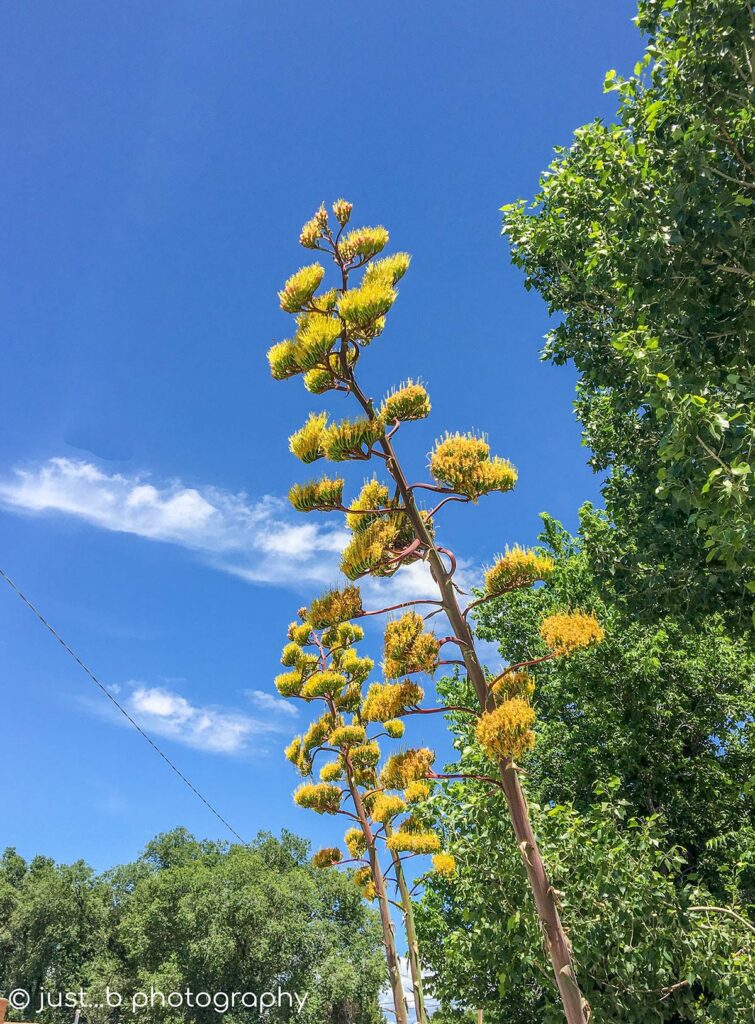
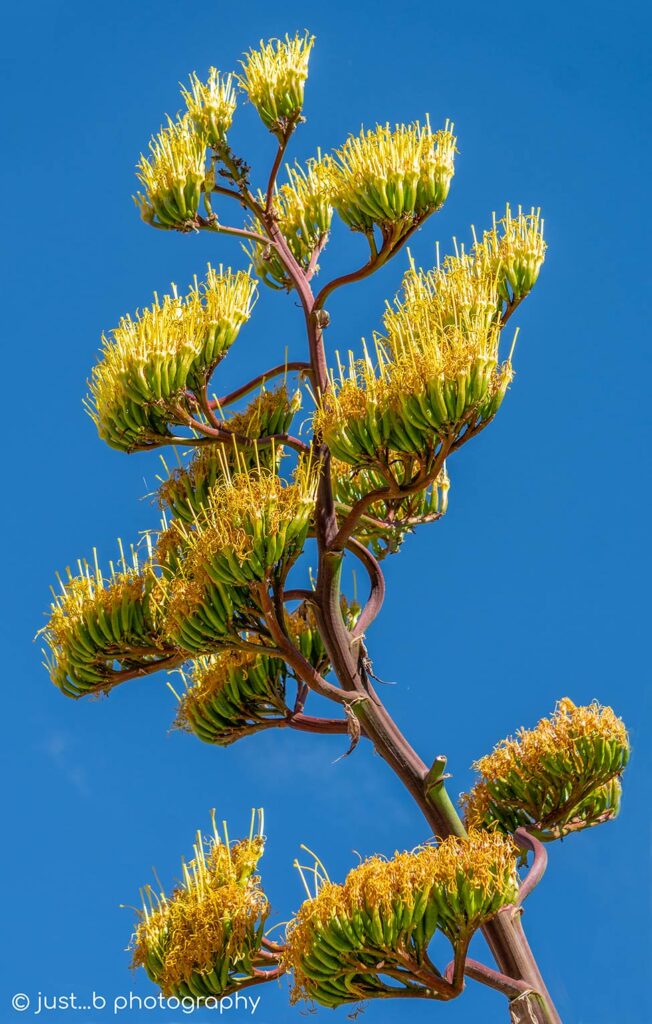
It’s definitely been a unique experience to not only see one of these plants unfolding, but THREE at the same time! It’s been very cool to observe and document. The fact this has been taking place all of a block away doesn’t suck either. No driving involved – yay!
The more this “Death Bloom” cycle evolved, the heavier the stems became. All those flower clusters must carry some series weight as the stems began leaning more and more!
Being they were right on a 4 way stop street corner, capturing the photos got kinda tricky. Looking up while standing in the street and keeping an eye out for cars gave new meaning to “multi-tasking”!
This last photo is a close-up view of the blooming, yellow flower clusters. Surprised there were not lots of bees buzzing around? But I was still glad to capture the moment 🙂

